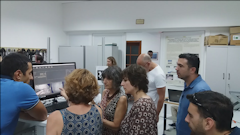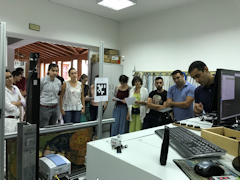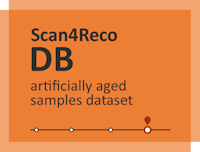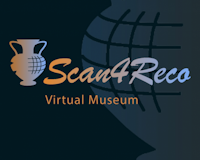|
Composition of the Software Platform
Acquisition module allows users to perform acquisition using a number of sensor and motion devices. For example, in the case of depth sensor acquisition, the user can define the parameters related to depth sensor and rotary stage devices. During acquisition, the recorded depth and color maps are displayed. Acquisition module allows users to select a point on the 3D model of icon on the 3D viewer of the Scan4Reco platform. The intermediate system of the Robotic Operating System (ROS) calculates the optimal motion plan for the mechanical arm to reach the selected point. The motion plan is executed by the Scan4Reco platform and the mechanical arm reaches the selected point on the actual icon. Acquisition module allows the users to perform acquisition using a number of sensor and motion devices. For example, in the case of UVVIS acquisition, the user can define the UVVIS settings, perform calibration and start actual acquisition. After acquisition, the recorded signal is displayed. 3D Modelling module produces a 3D digital replica of the original Cultural Heritage (CH) item using the data acquired by the rgb-depth sensor providing a coarse approximation of the CH item’s surface and appearance. It also supports a higher resolution 3D modelling utilizing the data recorded by the 3D photogrammetry camera. The user may change some parameters, for instance the desired resolution of reconstruction. During alignment, the recorded depth/color maps and the accumulated point clouds are displayed. Ageing Simulation module offers various ageing simulation methods that enable users to investigate the Cultural Heritage object’s appearance and geometry at different time instants. In the particles-based simulation for example, the user can configure the simulation parameters (e.g., u-ton system parameters, the u-ton source initialization) and see the simulation results (e.g., the propagated u-tons (red spheres)). Magnification module offers a functionality of enhancing the insight of Cultural Heritage (CH) 3D objects, by performing non-linear magnification in order to give more space to regions of the objects that are significant, on the expense of reducing the space available to less significant regions. The developed GUI allows the user to change the magnification parameters, for instance the desired magnification scale. Once magnification process is finished, the actual 3D model of the CH item and the 3D model after magnification can be displayed by clicking the corresponding radio buttons. Rendering module renders the resulted 3D model to the user and gives him the ability to visualize the effect of different texture maps to the model’s appearance, as well as inspect inner layers of the model if they exist. Also it exports the model to a specific format ready for 3D printing. Diagnosis module offers the visualization of the recorded data (e.g., an IR image), the execution of automatic diagnosis algorithms (e.g., for defects detection on an IR image) and the manual annotation of degradations. Text Synthesis module provides a comprehensive text with conservation strategies based on sets of annotated degradations occurring at particular areas of the Cultural Heritage item.
|
|






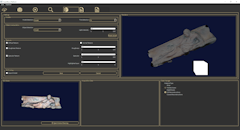
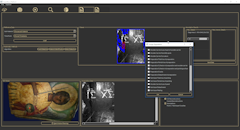
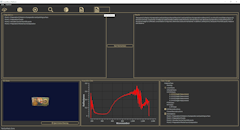
|
|

